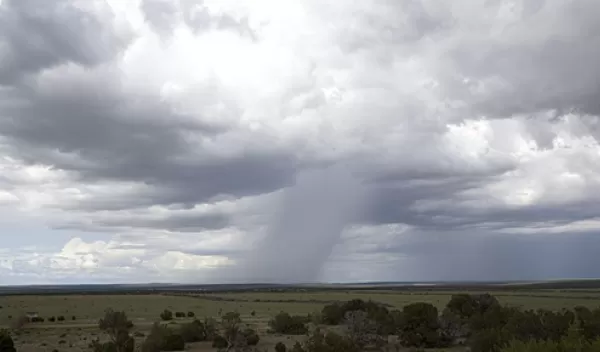
Using monsoons of the past to predict climate conditions of the future
In recent years, the North American Southwest has been suffering through weather extremes, ranging from searing heat waves and scorching wildfires to monsoon rainfalls that cause flash floods and mudslides.
As temperatures around the world continue to rise, a team of researchers from Syracuse University, the University of Connecticut, the University of Arizona, George Mason University and Harvard University is looking for environmental clues from millions of years in the past to predict what the Southwestern climate may look like in the future.
By analyzing ancient climate data, the scientists suspect that higher temperatures could cause stronger and more widespread summer rainfall across the U.S. Southwest.
Subtropical regions like southwestern North America are becoming drier in response to global warming, as higher temperatures cause more aridity overall. However, rising temperatures can also lead to instances of excess precipitation during the summer months. The mechanism driving this is a strengthening monsoon. Just this past summer, Southern California felt the effects of the monsoon, with historic flooding extending to places like Death Valley and other areas known for their lack of rainfall.
In a U.S. National Science Foundation-supported study led by Tripti Bhattacharya of Syracuse University, researchers explored another time in Earth's history with a strong North American summer monsoon. During the middle Pliocene epoch, approximately 3 million years ago, despite carbon dioxide levels like today, the North American Southwest was surprisingly full of lakes and plant and animal species needing a moister environment.
The team's new paper, published in the journal AGU Advances, suggests that a stronger monsoon in the middle Pliocene can explain past wetter conditions, with implications for the future.
"The study presents results that shed new light on a puzzling paleoclimate observation – the existence of wet conditions in southwestern North America during a warm, high-CO2 climate interval roughly three million years ago," says Dan McCorkle, a program director in NSF's Division of Ocean Sciences. "The research reveals an intensification of the North American summer monsoon during that past warm period. It suggests that the warmer conditions expected for the decades ahead may be accompanied by more frequent and more extreme summer rainfall in the North American Southwest."
